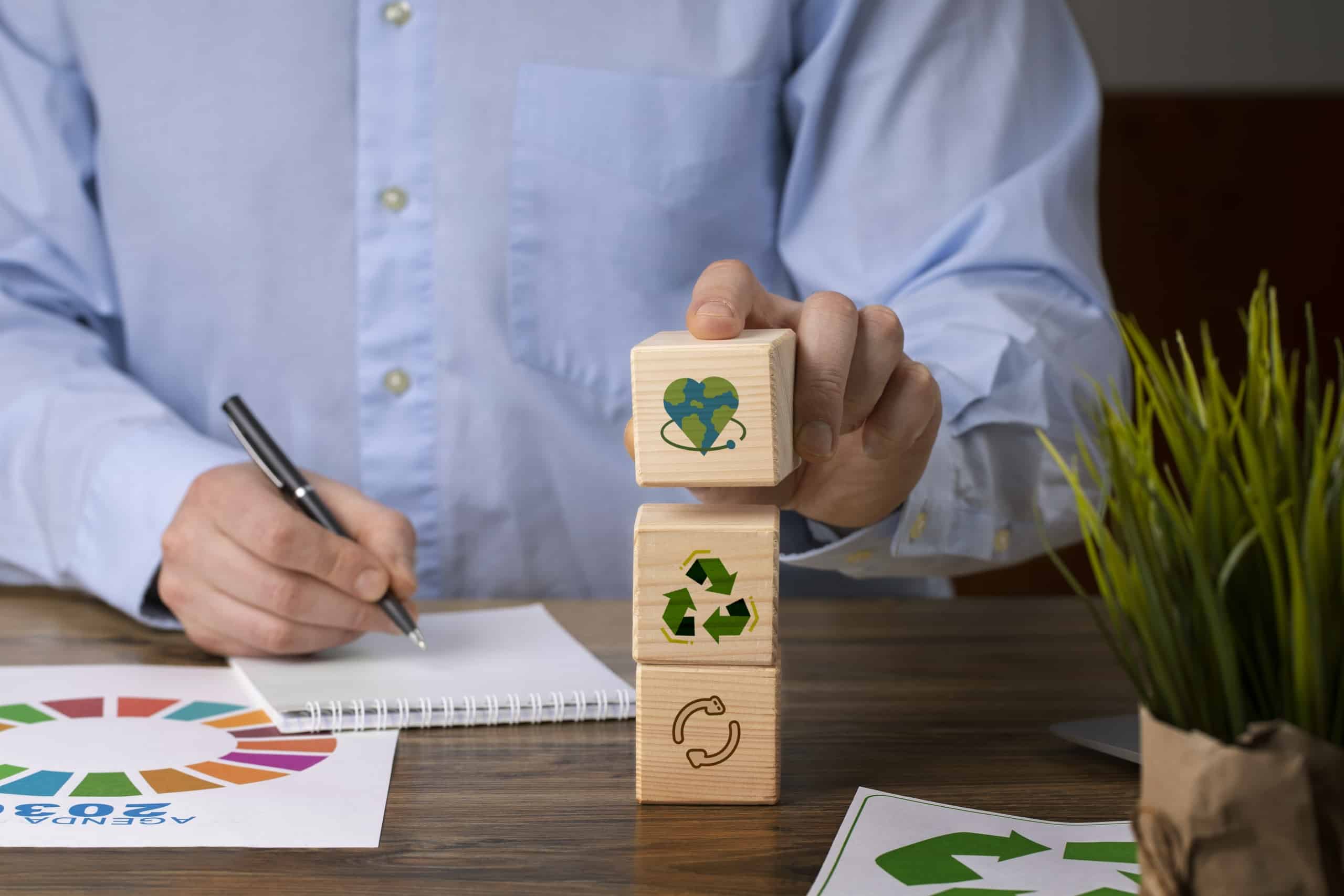1. Optimizing Supply Chain Logistics
The logistics of the supply chain are essential to meeting the high demand faced by major wet wipes manufacturers. In addition to guaranteeing a constant supply of materials, an effective supply chain also lowers expenses, shortens lead times, and avoids production interruptions. Building solid ties with suppliers becomes crucial for wet wipes manufacturers looking to expand to get dependable, premium materials at affordable costs. In addition to enabling wet wipes manufacturers to negotiate advantageous terms—which may be vital during times of changing raw material pricing or supply shortages—long-term agreements with reliable suppliers can guarantee stability in product quality. In times of high demand or scarcity, it also enables enterprises to get priority in supply chains, guaranteeing continuous production and a competitive advantage in the marketplace.
Another essential component of supply chain logistics optimization is inventory management. By guaranteeing that items are accessible precisely when required, just-in-time (JIT) inventory management may optimize production for high-volume operations while lowering the need for warehouse space and needless storage expenses. High-volume wet wipes manufacturers, however, may potentially profit from a hybrid strategy that blends JIT with strategically storing essential raw resources. Wet wipes manufacturers may maintain a stable manufacturing rate amid supply chain variations by stockpiling components like fibers, chemicals, and packaging necessities. This can function as a buffer against unforeseen delays. Wet wipes manufacturers may use forecasting technologies to make data-driven choices about how much and when to stockpile, balancing supply levels with anticipated demand to prevent shortages and overstock.
Lastly, for big companies, using digital technologies for supply chain transparency may be revolutionary. Every step of manufacturing may be tracked in real-time with the use of sophisticated logistics software, which offers important insights into delivery schedules, supplier performance, and inventory levels. Businesses can react swiftly to unforeseen developments and reroute supply as necessary to avoid production delays when they have access to real-time data. These solutions often include predictive analytics, which enables businesses to proactively solve problems by anticipating possible interruptions before they materialize. In addition to increasing efficiency, this visibility promotes better responsibility and communication throughout the supply chain, which in turn leads to more cooperation and coordination between production managers, logistics teams, and suppliers. Wet wipes manufacturers must optimize supply chain logistics via digital transparency, efficient inventory management, and smart sourcing to expand their businesses smoothly and continuously satisfy consumer needs in a cutthroat market.
2. Sourcing High-Quality, Sustainable Materials
Finding high-quality materials is essential for large-scale wet wipes makers to provide dependable, efficient goods that live up to customer expectations. However, the need for eco-friendly materials has increased due to consumer attitudes shifting toward sustainability, which presents wet wipes manufacturers with both difficulty and opportunity. Finding suppliers that can provide eco-friendly fibers, such as biodegradable or compostable materials, without sacrificing durability or absorbency is essential to sourcing premium, sustainable materials. With this strategy, wet wipes manufacturers must carefully screen suppliers to make sure that every material used satisfies strict requirements for both environmental responsibility and product performance. Wet wipes manufacturers may produce wet wipes that retain their integrity over time by investing in premium raw materials, which will increase consumer happiness and brand loyalty.
An increasing market of environmentally concerned customers may also be served by wet wipes manufacturers thanks to the move toward sustainable materials. The selection of materials, such as bamboo fibers or other plant-based substitutes, encourages the development of environmentally friendly goods. To make sure that these materials are sourced from renewable resources and that their manufacturing has a low environmental effect, wet wipes manufacturers may collaborate with certified suppliers. In addition to appealing to environmentally conscious customers, businesses may lessen the environmental impact of their goods by procuring recyclable or biodegradable components. Since companies that show sincere dedication to sustainability are more likely to draw in and keep devoted clients who respect environmental care, this may be a powerful selling advantage in the marketplace.
For high-volume manufacturing, it is crucial to guarantee consistency in the quality of sustainable materials. Because natural materials vary widely, wet wipes manufacturers need to conduct stringent quality checks with their suppliers to ensure consistency in terms of texture, strength, and safety requirements. For instance, routine testing procedures may confirm that materials are compatible with industrial equipment and guarantee that all materials satisfy market regulations. Because any variation in material quality might cause production to be disrupted and lead to increased waste or production downtime, consistency is essential. Wet wipes manufacturers may reduce risks and sustain steady production by establishing consistent quality control procedures with suppliers, which eventually guarantees that the final product will continue to be dependable and consumer-pleasing.
Last but not least, wet wipes manufacturers gain from the sustainable sourcing strategy as it supports global sustainability objectives, which are becoming more and more important in regulatory frameworks around the globe. Strict regulations on the environmental effects of consumer goods, especially single-use items like wet wipes, are already in place in many countries. Wet wipes manufacturers may avoid expensive revisions later on by proactively obtaining sustainable materials, putting them ahead of possible restrictions. Furthermore, companies that proactively implement eco-friendly procedures often enjoy improved credibility and a favorable public perception in the eyes of regulators and customers alike. In a highly competitive market, procuring sustainable, high-quality materials not only demonstrates a brand’s dedication to environmental and quality care, but it also guarantees adherence to changing regulatory requirements, enhancing its standing as a leader in sustainability and performance.
3. Integrating High-Capacity, Automated Machinery
Integrating high-capacity, automated technology is crucial for high-volume wet wipes manufacturers to effectively satisfy demands for large-scale manufacturing. By optimizing output, decreasing human error, and simplifying repetitive operations, automated equipment outfitted with cutting-edge technologies—like robots, artificial intelligence, and the Internet of Things (IoT)—can greatly increase production. Wet wipes manufacturers can create more units per minute using high-capacity equipment, increasing volume without requiring a lot of human labor. This automation guarantees that every product satisfies quality requirements in addition to supporting the consistency needed for mass manufacturing. Manufacturing companies may reduce labor costs, streamline the production line, and concentrate their workers on more specialized, value-added tasks by automating critical processes like cutting, folding, and packing.
High-capacity automated gear also improves production flexibility, which is a crucial quality for firms adapting to changing market needs. For example, wet wipes manufacturers may move between multiple product lines with less downtime thanks to modular or adaptable gear. Large-scale companies that may manufacture a variety of wet wipes, such as baby wipes, disinfection wipes, or personal care wipes, may find this capacity very useful. Wet wipes manufacturers may effectively manage production shifts depending on seasonal demand or new market possibilities when they have equipment that facilitates quick product changes. This adaptability enables wet wipes manufacturers to quickly satisfy consumer demands and maintain their competitiveness in a market that prioritizes speed and diversity.
Integrating predictive maintenance capabilities into automated equipment is also essential for high-volume wet wipes manufacturers. Sensors that provide real-time component monitoring, including vibration, temperature, and wear and tear, are often included in modern equipment. Wet wipes manufacturers may proactively avoid unplanned failures by using AI-driven analytics to forecast when a machine component could break or need repair. This predictive maintenance technique drastically decreases downtime because maintenance may be planned during off-peak times or between production cycles. Wet wipes manufacturers may maximize their investment in high-capacity gear by eliminating unscheduled pauses, maintaining a steady production flow, lowering maintenance costs, and extending the lifetime of costly equipment.
High-capacity automated equipment also offers the advantages of real-time monitoring and data integration, which provide wet wipes manufacturers with a thorough understanding of the wet wipes manufacturing process. IoT-enabled systems make it possible to gather and analyze data on variables like material use, energy consumption, and manufacturing speed, which offers insights into performance improvement. Wet wipes manufacturers may improve process efficiency and reduce waste by making data-driven modifications based on real-time monitoring of production indicators. This data-centric strategy improves resource allocation and promotes quality control, which lowers operating costs and improves adherence to sustainability objectives. In the end, wet wipes manufacturers may expand their operations, increase process efficiency, and maintain flexibility in a changing market by using high-capacity automated technology.
4. Streamlining Quality Control Processes
Maintaining constant quality over millions of units is a difficult but essential challenge for manufacturers of high-volume wet wipes. Wet wipes manufacturers can guarantee that every product satisfies strict requirements for safety, effectiveness, and customer satisfaction by streamlining quality control procedures. Throughout the wet wipes manufacturing process, real-time inspection is made possible by the use of automated quality control systems that are driven by artificial intelligence and sophisticated sensors. Small imperfections that may not be immediately apparent to the human eye, including uneven cuts, incorrect moisture levels, or packaging issues, can be picked up by these systems. Automated quality control helps wet wipes manufacturers save waste and stop faulty items from reaching consumers by identifying these problems early on, safeguarding the brand’s image and the faith of its customers.
Another successful tactic for major firms looking to optimize their operations is data-driven quality control. Wet wipes manufacturers may find patterns and trends that guide ongoing quality improvements by gathering and evaluating data from every step of production. For instance, information on typical fault types or manufacturing process sites where mistakes are more likely to happen might direct focused modifications, improving the efficiency and consistency of the final product. Quality control systems may even learn from previous production cycles using machine learning algorithms, modifying their inspection standards to more effectively identify any problems. Wet wipes manufacturers can proactively maintain high standards thanks to these predictive capabilities, which also save time and money on recalls and remedial measures.
Additionally, flawless traceability is made possible by integrated quality control systems, which is crucial for enterprises with large production volumes. Traceability guarantees that any faulty batch may be promptly identified, located, and fixed without causing any production line disruptions. Because it enables effective problem-solving and adherence to industry norms, this is particularly crucial for wet wipes businesses with various sites or a range of product lines. Wet wipes manufacturers may retain responsibility at every stage, streamline audits, and satisfy the exacting requirements established by international certification organizations and regulators by integrating traceability into quality control. Because consumers are aware of the brand’s dedication to strict quality assurance, this strategy not only increases transparency but also strengthens consumer trust.
Last but not least, efficient quality control procedures maximize resource use, which has a direct effect on sustainability and cost-effectiveness. Automated and data-driven quality control reduces operating costs by using less material to produce and eliminate faulty items. To ensure that every batch of wet wipes has the exact quantity of raw materials needed, wet wipes manufacturers may also employ quality control data to fine-tune material utilization. This degree of accuracy minimizes the environmental effect of manufacturing, reduces waste, and lowers energy usage, all of which promote sustainable production methods. Therefore, establishing efficient quality control procedures is crucial for high-volume wet wipes manufacturers not just to ensure product integrity but also as a calculated investment in operational effectiveness, legal compliance, and sustainability.
5. Enhancing Energy Efficiency and Sustainability
Energy efficiency and sustainability have emerged as top concerns for large-scale wet wipes manufacturers at a time when environmental responsibility is becoming more and more important to both customers and regulatory agencies. Purchasing contemporary equipment designed to use less energy is the first step in improving energy efficiency. Advanced machinery often has features like variable speed drives, which save energy by adjusting the machine’s working speed according to production demands. Furthermore, a lot of machines now include energy recovery systems that collect and repurpose surplus energy produced during manufacturing. Wet wipes manufacturers may meet customer expectations and sustainability objectives by reducing their total power use, which will also minimize their operating costs and environmental effects.
Another efficient strategy to boost energy efficiency is to optimize the structure and workflow of the manufacturing. Energy consumption for large-scale manufacturing may be greatly reduced by setting up workstations and machinery to reduce mobility and idle time. For example, arranging machinery to optimize the movement of materials from one manufacturing step to the next eliminates the need for lengthy transportation, which often calls for energy-intensive forklifts or conveyors. By eliminating the need for continual human intervention and guaranteeing that production processes function smoothly and continuously with few start-and-stop cycles, automated equipment may further help energy savings. An overall decrease in the energy needed to create each unit of wet wipes is made possible by effective design and well-coordinated processes, which becomes significant in high-volume production.
Additionally, obtaining materials sustainably is essential for improving environmental responsibility and energy efficiency. Wet wipes manufacturers may reduce their carbon footprint indirectly by selecting suppliers that utilize renewable energy sources, such as solar or wind power, in their production operations. Additionally, selecting compostable or biodegradable materials lowers the environmental effect of disposal and connects the brand with customer’s desire for eco-friendly goods. As an environmentally friendly substitute for conventional synthetic materials, wet wipes manufactured from sustainable fibers, such as bamboo or organic cotton, break down more quickly. Wet wipes manufacturers may produce goods that meet customer demands and further environmental objectives by including these sustainable materials in the wet wipes manufacturing process.
A manufacturer’s dedication to sustainability is further strengthened by putting waste reduction strategies into action. Even a small proportion of lost resources may build up to large amounts in high-volume manufacturing. For example, recycling programs may be set up to collaborate with nearby recycling facilities or to recycle packaging waste, off-spec goods, and scrap materials back into the manufacturing cycle. Additionally, using water recycling technologies in the production of wet wipes lowers wastewater disposal expenses and conserves a vital resource. The industry may reduce total water consumption by treating and reusing recycled water for activities like mixing and moistening that need a lot of water. In addition to helping industries save money, waste reduction complies with increasingly stringent environmental laws in many areas.
Finally, businesses may convey their environmentally friendly actions to stakeholders and customers by using sustainability reporting and transparency procedures. Wet wipes manufacturers show responsibility and a sincere commitment to sustainability by making statistics on energy use, waste reduction, and sustainable practices publicly available. Since customers are more inclined to support businesses that place a high priority on environmental responsibility, such openness may improve brand perception. Furthermore, industry standards and certifications, which increasingly demand that firms demonstrate their environmental impact reductions, might benefit from sustainability reporting. Focusing on energy efficiency and sustainable practices helps high-volume wet wipes manufacturers become leaders in their industry and build enduring relationships with environmentally concerned customers, which benefits both the company and the environment.
6. Adapting to Market Demands through R&D
High-volume wet wipes manufacturers must give research and development (R&D) top priority in the rapidly changing consumer products sector to remain competitive and satisfy changing customer needs. The requirements of consumers are always evolving, and they are more drawn to items that are more practical, efficient, and consistent with their values—such as being environmentally friendly or catering to certain skin conditions. Wet wipes manufacturers may innovate and develop several product lines to meet these needs by investing in R&D. For example, R&D teams may create formulations for particular applications, such as hypoallergenic wipes for newborn care or antimicrobial wipes for medical settings. Manufacturers may access new income streams and expand their market reach and brand appeal by customizing goods to cater to niche markets.
Furthermore, R&D is essential for facilitating quick adjustments to seasonal needs and trends. Wet wipes manufacturers may develop goods that appeal to certain consumer categories by experimenting with and improving their formulas, textures, and packaging via research and development. For instance, R&D may assist in creating biodegradable, plant-based, or compostable wet wipes that appeal to purchasers who are concerned about the environment as consumer interest in sustainable and eco-friendly goods increases. Likewise, research and development might concentrate on creating packaging that is recyclable or composed of sustainable materials, since this improves company image and reflects the ideals of modern customers. Wet wipes manufacturers may take advantage of new market possibilities by keeping their product lines current and relevant by paying attention to seasonal demands and market trends.
Additionally, spending money on R&D helps a company improve the quality and performance of its products, which is crucial for maintaining the loyalty and confidence of customers. Through research and development, businesses may investigate methods to improve the wet wipes’ absorbency, softness, and durability—all of which are important qualities that customers look for. By consistently enhancing these attributes, manufacturers make sure that their goods stand out in a crowded market, encouraging repeat business and brand loyalty. For example, R&D projects may investigate fiber technology advancements that make wet wipes more durable yet kinder to the skin, offering a noticeable enhancement that customers like. Businesses set themselves apart from rivals by providing greater quality, which is particularly important in high-volume marketplaces because consumers often have a lot of alternatives.
Additionally, R&D gives firms the chance to improve sustainability and manufacturing efficiency, two aspects that are becoming more and more important in determining consumer choices. R&D projects may provide more energy-efficient manufacturing methods that save operating expenses or investigate alternative, environmentally friendly materials that lessen their influence on the environment. R&D, for instance, may help create low-energy drying methods that reduce the environmental impact of every manufacturing cycle. In addition to advancing sustainability objectives, these inventions also appeal to a rising market of environmentally concerned customers. Wet wipes manufacturers strengthen their brand’s image and dedication to good change by positioning themselves as pioneers in innovation and environmental responsibility via the integration of R&D-driven industrial innovations.
Lastly, a significant emphasis on R&D encourages adherence to industry standards and certifications, which are necessary for access to international markets. Particularly in the personal care and healthcare industries, different areas may have different requirements for product safety, biodegradability, or ingredient transparency. To facilitate a more seamless market introduction and enhance trust, R&D teams might endeavor to guarantee that all formulations and materials meet or surpass these requirements. R&D is essential for enterprises entering foreign markets to modify their goods to satisfy local regulatory standards. Businesses reduce the possibility of delays, penalties, or recalls by assuring compliance via R&D, preserving both business continuity and a favorable reputation for their brand. R&D therefore turns into a vital resource for large-scale wet wipes manufacturers hoping to maintain their flexibility and competitiveness in a highly regulated and dynamic worldwide market.






